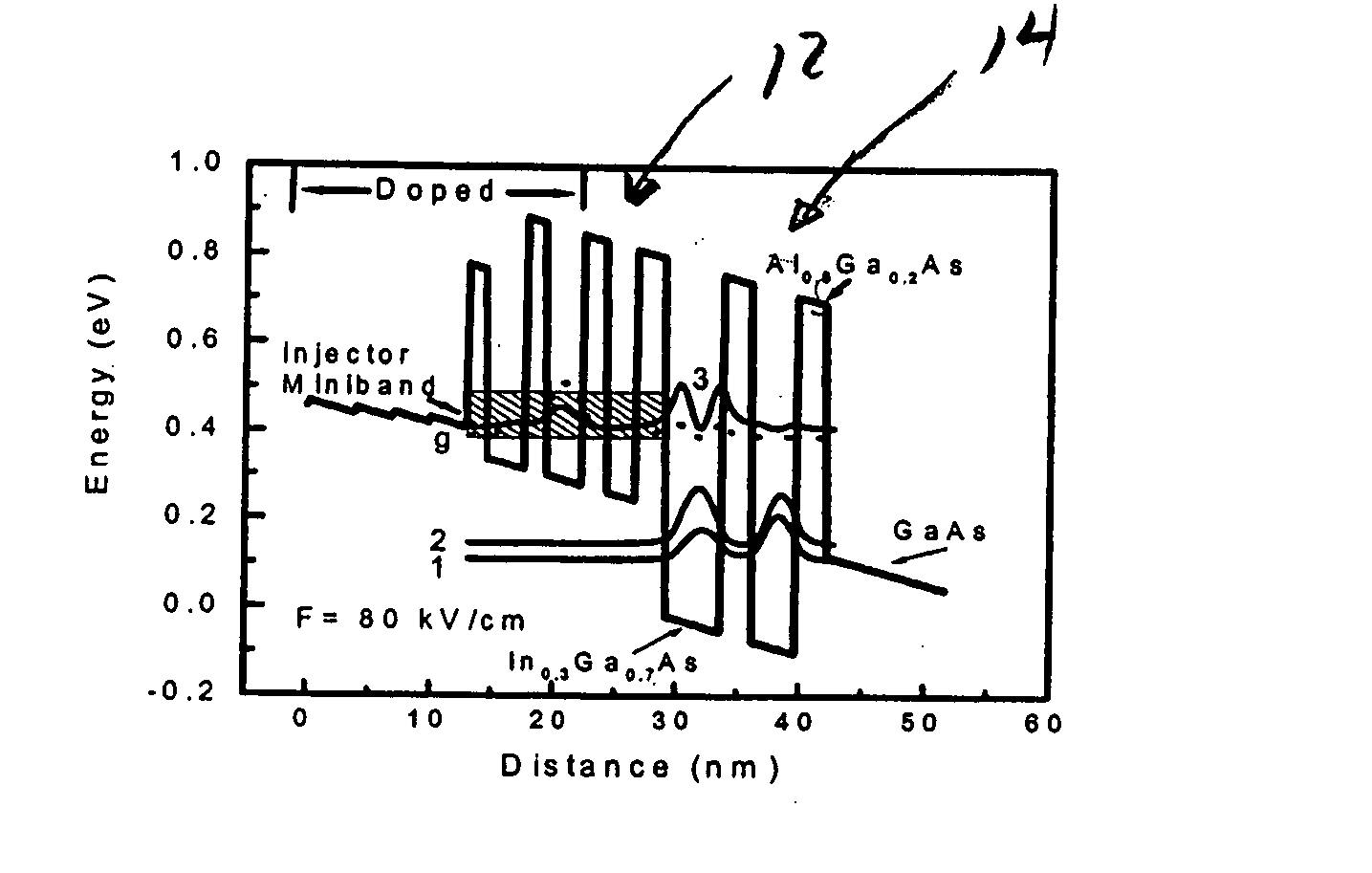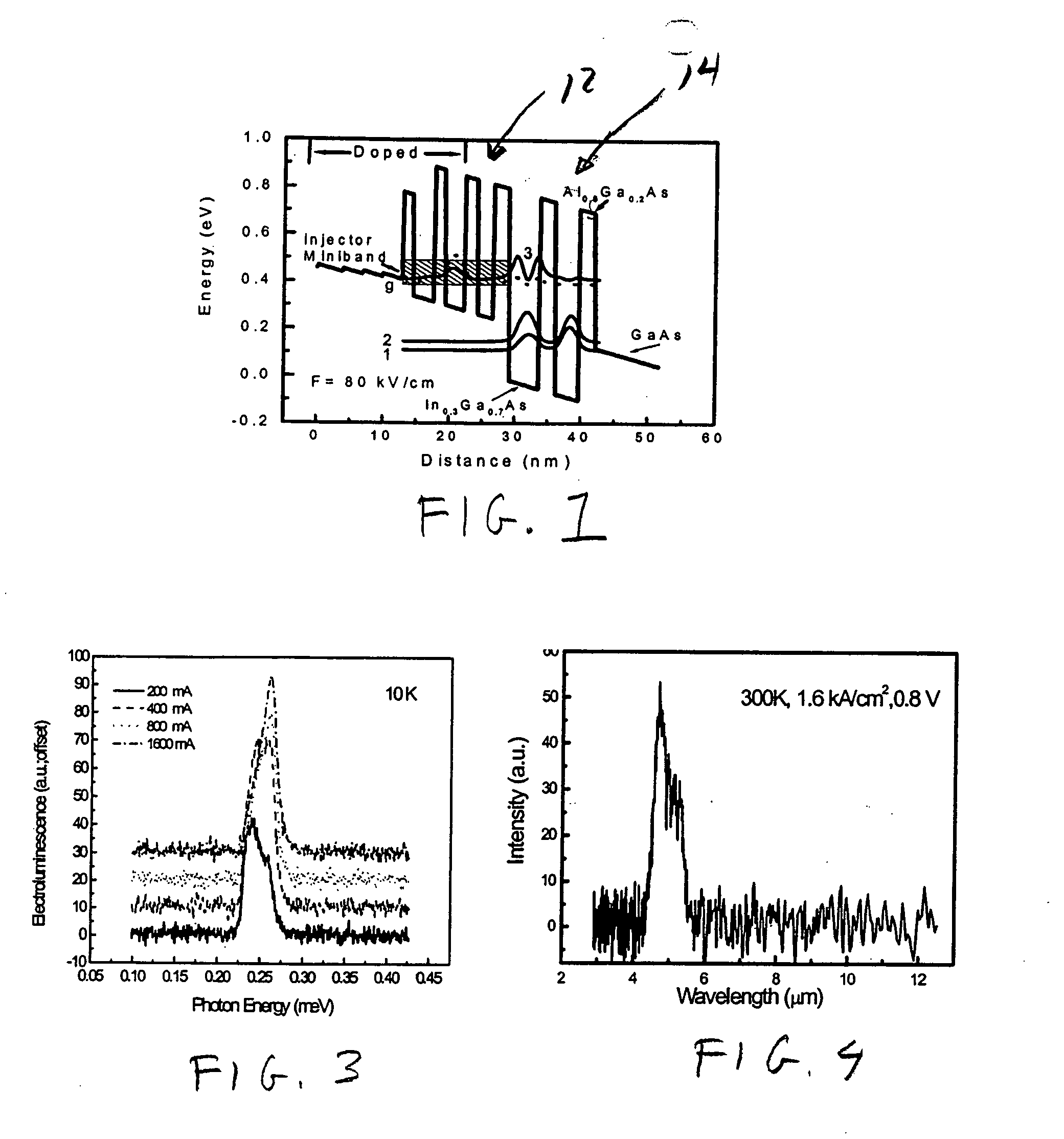Intersubband mid-infrared electroluminescent semiconductor devices
a semiconductor and mid-infrared technology, applied in semiconductor lasers, laser details, electrical equipment, etc., can solve the problems of low power conversion efficiency (0.5%), only at wavelengths around 9 m, and the inability to operate cw, and achieve the effect of suppressing carrier leakag
- Summary
- Abstract
- Description
- Claims
- Application Information
AI Technical Summary
Benefits of technology
Problems solved by technology
Method used
Image
Examples
Embodiment Construction
[0020] For purposes of exemplifying the invention, a conduction band energy diagram of an injector region 12 and a double quantum well (DQW) active region 14 for a device in accordance with the invention is shown in FIG. 1. The injector 12 and the DQW active region 14 are inserted in the middle of a plasmon-enhanced n-GaAs waveguide. See, S. Barbieri, et al., 2001, supra, and C. Sirtori, 2002, supra. FIG. 1 shows the moduli squared of the relevant wave functions (solid curves for the n=3, n=2 and n=1 states and a dotted curve for the g state). The injector region is n-type doped (4×1017 cm−3) over the indicated range, and corresponds to a donor sheet density of 3.7×1011 cm−2 in the superlattice section. A simplified cross-section of the layers in the transverse direction is shown in FIG. 2, with exemplary compositions, doping levels, and thicknesses of the various layers indicated thereon. As illustrated in FIG. 2, the injector 12 and the active region 14 are formed between a GaAs u...
PUM
 Login to View More
Login to View More Abstract
Description
Claims
Application Information
 Login to View More
Login to View More - R&D
- Intellectual Property
- Life Sciences
- Materials
- Tech Scout
- Unparalleled Data Quality
- Higher Quality Content
- 60% Fewer Hallucinations
Browse by: Latest US Patents, China's latest patents, Technical Efficacy Thesaurus, Application Domain, Technology Topic, Popular Technical Reports.
© 2025 PatSnap. All rights reserved.Legal|Privacy policy|Modern Slavery Act Transparency Statement|Sitemap|About US| Contact US: help@patsnap.com



